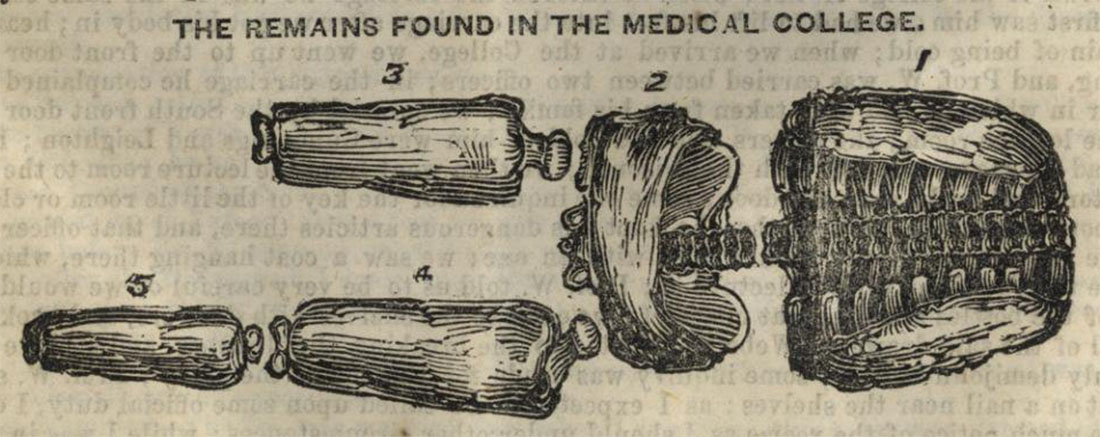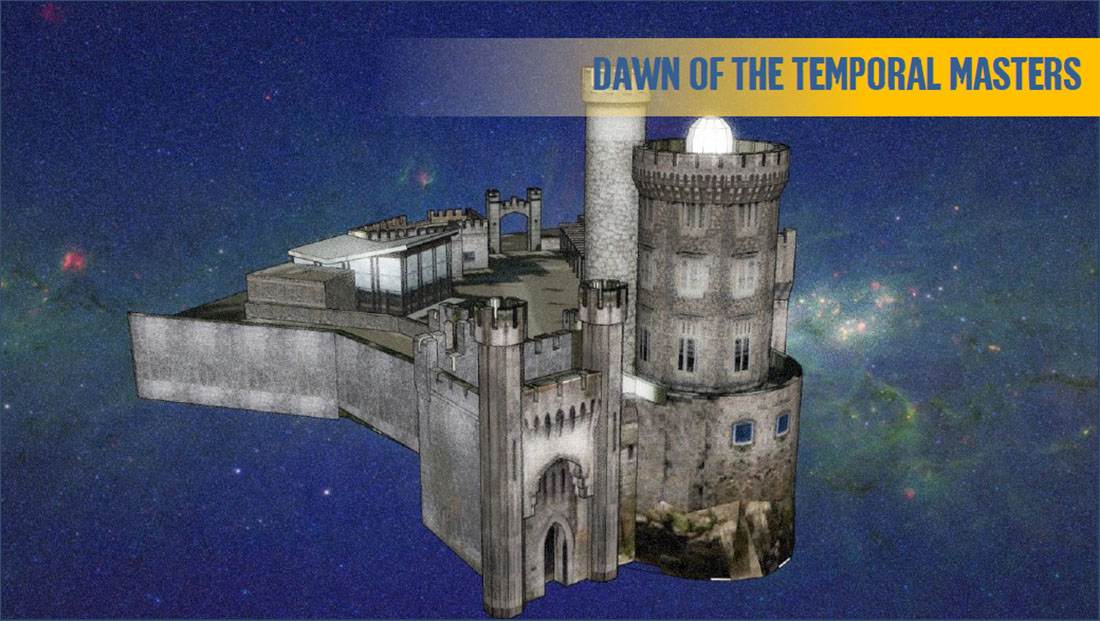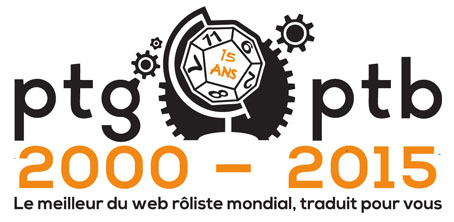THE FALLACY OF THE PERFECT CRIME
Something that can really trip you up when trying to create clues is the fallacy of the perfect crime.
For example, let’s say the PCs find an incriminating note that gives them a vital clue.
… but wait. Why would the conspiracy let the PCs find the note? Why wouldn’t they destroy it?!
Well, in some cases it’s carelessness. In others, they’re holding onto incriminating evidence that can give them leverage over their fellow conspirators. Sometimes they’re planning to destroy it, but they just haven’t yet. Sometimes the note has information they need for a job, so they hold onto them until the job is done. Maybe they have a sentimental attachment to the note because it was written by their dead wife. And so forth.
Alternatively, maybe they DID destroy the note and that’s the evidence that the PCs find. Sometimes this is structurally cosmetic (the only information to be gleaned is that the information has been destroyed). Sometimes this can be a consequence of the players’ actions, like in my Dragon Heist campaign where they knocked politely on someone’s door and then waited for them to open it while, inside, the bad guy was shuffling all their papers into the fire. (One of the nice things about the Three Clue Rule is that you can destroy clues with a clear conscience when it’s appropriate.) But often the PCs will be able to pull a clue out of the destruction (they burned the note, but this one enigmatic scrap remains!).
Of course, this logic also extends beyond incriminating notes.
Wouldn’t it make sense for the murderer to wear gloves or wipe away their fingerprints? (Maybe they did and the clue is something else. Or they tried, but missed a partial. Or they’re dumb. Or they panicked. Or they wanted to, but got interrupted.)
Wouldn’t they have disabled the cameras? (Maybe they didn’t spot the camera. Maybe they did hack the cameras and deleted the footage, but left traces from their hack that can be traced instead. And so forth.)
The perfect crime (or conspiracy), of course, would have flawless operational security and leave no evidence. But that’s not how it usually plays out in reality, and doesn’t really make for a great scenario in any case.
As GMs designing scenarios, I think we’re particularly susceptible to the fallacy of the perfect crime: Obviously if the bad guy knew they were leaving a clue, they would destroy it. You just thought of how the criminal could have left a clue, so obviously the criminal would have realized that, too!
What you actually want to do is the opposite: If you’re thinking about the crime and can’t find a clue that gives the PCs the information you need to give them… well, what extra mistake did the criminal make that will let you give them that information?
VARIED CLUES
As you’re designing clues for your scenario, you’ll want to make sure to include a wide variety of them. This is partly about creating a more engaging investigation. (If the PCs are just doing the same thing over and over and over again, that’s just less interesting than an adventure where they’re doing a lot of different things. And a puzzle isn’t really puzzling if the solution is always the same thing.) But it’s also structurally important: If all the clues are fundamentally similar, then it’s not just that the players are doing the same thing over and over again; it’s that the players MUST do that thing. And if they don’t think to do it, then they’ll miss ALL the clues.
The Three Clue Rule is built on redundancy, but clues which are overly similar to each other only provide a superficial redundancy. It’s kind of like monoclonal agriculture: When all the bananas are clones of each other, they’re all susceptible to the same pests and can be universally wiped out by a single disease. Just so with monoclonal clues, which can all fail simultaneously.
For example, if the PCs need to find out that Tony is hiding out at the Silver Rodeo, you might say:
- They can ask Tony’s girlfriend, Susan.
- They can ask Tony’s partner, Silvester.
- They can ask Tony’s mother, Sara.
Those are three different clues. But if the players, for whatever reason, don’t ask the people in Tony’s life where Tony is hiding out — because they don’t want to risk tipping him off, because they erroneously conclude that Tony wouldn’t have told anyone where he was going, or just because they don’t think of doing it — then that one failure will wipe out all of those clues.
Now, the principle of permissive clue-finding means that shouldn’t necessarily get rid of these “redundant” clues. But for structural purposes, they can be grouped together and only “count” as a single clue for the purposes of the Three Clue Rule.
When you’re looking to make varied clues, using clues with different forms is good. But the most important thing is that the clues should be found in different ways – different skills, different insights into how a crime scene should be investigated, and so forth.
As a final note, remember that the problem of monoclonal clues is limited to the clues pointing to a single revelation. It’s fine to design a scenario with lots and lots and lots of clues coming from talking to people, as long as those clues are spread out across a bunch of different revelations (each of which has varied clues of different types also pointing to them).
MULTI-PART CLUES
A common error that I see GMs make when playing around with the Three Clue Rule for the first time is to mistake the Three Clue Rule for a kind of logic puzzle:
- This clue indicates that the killer was wearing a green sweater.
- This clue indicates that the killer was taller than six feet.
- This clue indicates that the killer had gray hair.
If you combine those clues, you know that the only person with gray hair who was taller than six feet and also wearing a green sweater was Peter! So Peter killed Tony’s wife!
These clues can work if each uniquely points at Peter: He was the only one in the green sweater, the only one taller than six feet, and the only one with gray hair.
But if you need all three pieces of information – to eliminate the other people with green sweaters or gray hair or whatever – then this falls apart. Because you NEED all three pieces of information, that means that each piece of information (green sweater, six feet, gray hair) is actually a separate conclusion.
This doesn’t mean that you can’t design mysteries like this, though! Once you recognize that these are three separate conclusions, you can simply follow the Three Clue Rule: Have three clues pointing to the green sweater, three clues pointing to the killer’s height, and three clues indicating the killer had gray hair.
This technique can add a satisfying dimensionality to your mystery scenarios, giving the players a clear sense that their investigations are building towards some central revelation. It can be particularly effective for the Big Truth(s) in X-Files-type campaigns or identifying the location where the big conclusion of the campaign is going to take place. You can see an example of this in my Eternal Lies Remix.
FORMS OF CLUES
Let’s wrap things up by looking at the specific forms that clues can take. This won’t be a complete or encyclopedic coverage of the topic, largely because the cool thing about clues is that they can be virtually infinite in their form and variety, but hopefully I can provide a few ideas.
First, there are some broad categories of form that clues can fall into:
- Physical Artifacts
- Glyphs/data
- Bio-Signature
- Interrogation
- Surveillance
These, too, are not comprehensive. And the boundaries between them aren’t exactly razor-sharp.
Here’s a list of specific examples drawn from scenarios I’ve designed:
- Correspondence (letters, e-mail, etc.)
- Diaries
- Ephemera from a location (matchbooks, theatrical posters, tickets, etc.)
- Official reports
- Tracks
- Surveillance (of a person or location)
- Tailing someone
- Business cards
- Fingerprints
- DNA
- Blood type (including fantastical types like “Vulcan”)
- Graffiti
- Financial records
- Tattoos
- Canvassing
- Video/audio recordings
- Mystic visions/strange dreams
- Shipping information (tracking, postmarks, return addresses, etc.)
- Books (including inscription and marginalia)
- Bureaucratic records/background checks


















